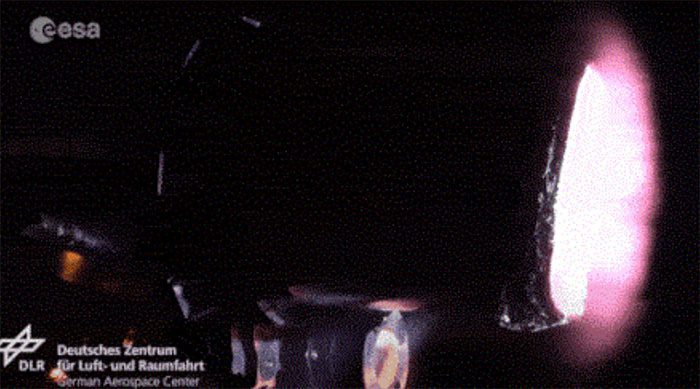A plasma wind tunnel completely vaporizes a satellite model in a video from the European Space Agency (ESA).
This demonstrates that the speed and heat of the re-entry process can obliterate entire space satellites.
Complete Destruction
By testing the thermal thresholds of satellites, engineers can design spacecraft that are strong enough to perform their missions but will also safely burn up in the atmosphere as they fall back to Earth, an ESA representative stated in a press release.

ESA conducts experiments on the melting of satellites using a plasma wind tunnel.
Once a satellite’s mission is complete, its operators can maneuver the object out of orbit by using its control system to lower the satellite’s altitude, aiming for a point in orbit closest to Earth, known as controlled re-entry.
According to ESA, when the altitude is low enough, gravity will take over and pull the spacecraft down. This method causes the satellite to re-enter the atmosphere at a steep angle, ensuring that debris will fall into a relatively small area. ESA reports that satellite operators typically target open ocean areas to minimize risks to human life.
ESA researchers have tested and found that if a satellite were to plunge straight into Earth’s atmosphere in an uncontrolled manner, the risk of casualties from impact is less than 1 in 10,000.
Satellite Melting Experiments
To achieve that level of certainty, engineers had to demonstrate that all parts of the falling satellite would ignite before they approached the ground – as seen in the footage of the satellite being tested inside a chamber at the German Aerospace Center (DLR) in Cologne, Germany.
According to the DLR Institute of Aerodynamics and Flow Technology, scientists there simulated atmospheric conditions heated by an electric arc to temperatures exceeding 6,700 degrees Celsius.
In the ESA video, the Solar Array Drive Mechanism (SADM) – a component of the satellite that positions its solar panels and one of the largest parts of a typical satellite – enters the plasma wind tunnel. Experiments to make the SADM more susceptible to atmospheric destruction began a year earlier. In the initial phase, researchers created software models of the SADM to test the melting point of a new type of aluminum screw.
Subsequently, scientists built a physical 3D model of the SADM using the new aluminum screws and subjected it to testing inside the plasma chamber. When exposed to winds at thousands of miles per hour, the SADM was completely vaporized.
Experiments like this to melt satellites are also part of ESA’s program called CleanSat, in which the agency is researching and testing new technologies so that future low-orbit satellite designs will adhere to the somewhat daunting concept of “D4D.”


















































